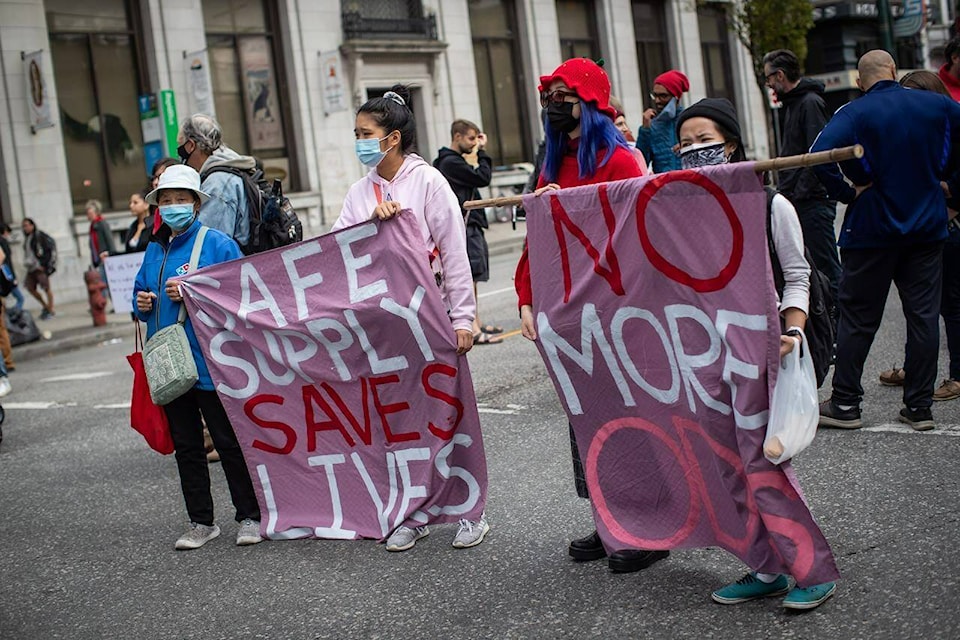The B.C. Ministry of Mental Health and Addiction’s proposal to decriminalize possession of small amounts of opioids was made without final consultation to policy planners or enough consideration for the needs and safety of opioid users.
That’s the claim of organizers of a Victoria-based harm reduction group involved with crafting the policy.
On Nov. 2, B.C. became the first province to apply for an exemption from Section 56(1) of Ottawa’s Controlled Drugs and Substances Act, a change that would allow up to 4.5 grams of opioids (including heroin and fentanyl), cocaine or methamphetamine to be held for personal or social use without fear of police seizure or persecution.
READ ALSO: B.C. and Victoria’s overdose deaths still rising five years after public health emergency declared
“B.C. is adding new health and substance-use care services almost weekly, but we know shame prevents many people from accessing life-saving care,” Minister of Addictions Sheila Malcolmson said justifying the application. Nearly 8,000 people in B.C. have died due to toxic drug supplies since the province declared the opioid crisis a public health emergency in 2016, she said. “That’s why it’s crucial to decriminalize people who use drugs.”
READ ALSO: UPDATE: Long-term funding missing for police naloxone kits amid B.C. opioid pandemic
However, SOLID Outreach Victoria’s harm reduction co-ordinator Fred Cameron said the proposed legislation decriminalizes too small a group of opioid users.
“Having a fixed number as low as 4.5 grams doesn’t allow enough for a few days,” he said. “Anyone who’s living out in rural parts of the province – even somebody who’s living on Salt Spring Island – if they go out of town for a weekend, they’re going to be at the mercy of street supply (once faced with withdrawal symptoms),” he said.
The result could be continued criminal persecution or death from a toxic supply for vulnerable populations of opioid users, such as those experiencing homelessness or those who rely on others to acquire opioids – disproportionately women and people with disabilities.
The Core Planning Committee that helped with the application – a group of 20 B.C. harm reduction organizations, including SOLID Outreach – also weren’t consulted on the final draft of the new policy, Cameron said.
“I felt very good about the process … but the ministry went ahead and created the document independent of that group,” he said. “We thought we were drafting this as a team, but instead, we were sent a final draft that had already been approved.”
Over six Zoom meetings, he added, “we were used more as a focus group rather than collaborating to create a draft. That didn’t sit right.”
Do you have a story tip? Email: kiernan.green@blackpress.ca.
Follow us on Twitter and Instagram, and like us on Facebook.
